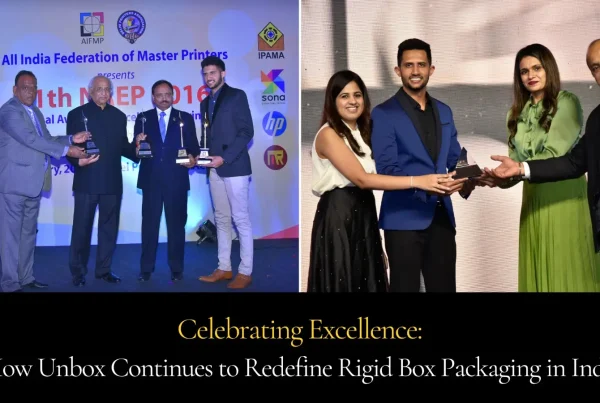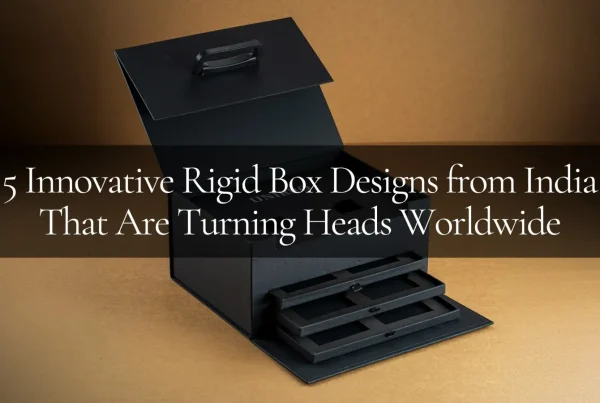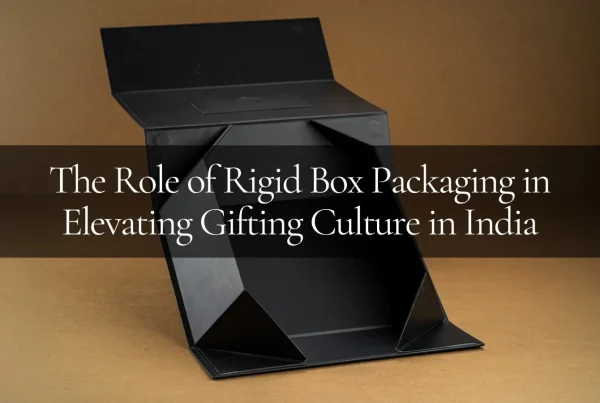In India’s thriving premium packaging industry, rigid boxes have emerged as a symbol of luxury, durability, and brand storytelling. Be it for gifting, electronics, cosmetics, or fashion, a well-crafted rigid box not only secures the product but also elevates its perceived value. But what goes into making these sophisticated boxes? Let’s take a detailed look at the rigid box manufacturing process in India — from concept to creation.
What is a Rigid Box?
A rigid box is a non-collapsible, strong paperboard box often used for high-end packaging. Unlike foldable cartons, rigid boxes retain their shape and provide excellent protection and aesthetic appeal. Their solid structure and customisable surface treatments make them ideal for luxury products and gifting solutions.
Step-by-Step: The Rigid Box Manufacturing Process in India
1. Design & Conceptualization
Everything begins with understanding the client’s packaging needs — from product type and weight to branding goals and user experience. Indian manufacturers often work with in-house designers to:
- Determine dimensions and structure
- Choose opening styles (clamshell, magnetic closure, drawer-type, etc.)
- Select surface finishes (matte/gloss lamination, embossing, foil stamping)
- Align packaging with brand guidelines and gifting trends
The output at this stage is a detailed prototype or 3D mockup for client approval.
2. Material Selection
Rigid boxes are typically made from high GSM greyboard or chipboard (ranging from 800 to 1500 GSM) to provide the required strength. The board is then wrapped in printed or textured paper, which can be coated with specialty finishes.
Common materials used:
- Greyboard (for structure)
- Art paper (for outer wrapping)
- Kraft paper or recycled options (for eco-friendly versions)
- Fabric, velvet, or leatherette (for premium touches)
India’s rigid box suppliers increasingly offer sustainable and recycled materials as eco-conscious packaging gains popularity.
3. Printing
The outer wrap or cover paper undergoes printing, typically using offset printing for high-quality image reproduction. Brands can incorporate:
- Logos
- Product information
- Festive designs
- QR codes or interactive elements
This printed sheet will later be laminated or treated before being mounted onto the box structure.
4. Surface Finishing
To enhance both look and feel, the printed wrap is treated with various finishes such as:
- Lamination (matte, gloss, soft-touch)
- UV coating for shine and spot effects
- Foil stamping (gold, silver, holographic)
- Embossing/Debossing for a tactile feel
- Textured coatings for luxury appeal
These effects help position the rigid box as a premium product — which is especially important in India’s competitive gifting and retail markets.
5. Die Cutting
The next step involves die-cutting the greyboard into the required shape and size. High-precision machines ensure that all panels and flaps are accurately cut, allowing seamless box assembly.
Die-cutting is also used to shape windows, compartments, or inserts that may hold product components securely within the box.
6. Box Assembly
This is where craftsmanship meets automation. Depending on order volume and box complexity, Indian manufacturers either use semi-automatic or fully-automatic rigid box machines to:
- Score and fold the greyboard
- Mount the printed paper onto the board (wrapping)
- Assemble and glue panels together
- Add magnets, ribbons, or fabric handles (if applicable)
In high-end rigid box manufacturing, manual handwork is still used for detailed finishing and quality assurance, especially in wedding invitation boxes or boutique gifting solutions.
7. Quality Check
Each box undergoes a thorough quality inspection for:
- Alignment of wrap paper
- Finishing uniformity
- Structural strength
- Print accuracy
- Magnetic closures or drawer pulls (if included)
Defective pieces are removed to maintain a premium standard. This is critical for brands that rely on packaging to create a luxury unboxing experience.
8. Final Packaging & Dispatch
Finished rigid boxes are carefully packed — often with foam inserts or dividers — and dispatched to brands, retail outlets, or direct to consumer (D2C) hubs. For exports, special moisture-resistant packing is used to ensure the boxes retain their shape and finish in transit.
Why Indian Rigid Box Manufacturers Are in Demand
India has become a preferred hub for rigid box production, thanks to its:
- Skilled labour for detailed hand-finishing
- Cost-efficient production
- Access to sustainable materials
- Rapid adoption of automation
- Flexibility in small and bulk orders
From large luxury brands to small-scale boutique labels, Indian rigid box makers serve both domestic and global clients with a mix of tradition and modern manufacturing excellence.
Conclusion
Creating a rigid box is a meticulous process that balances structure, style, and story. From design to finishing, every stage adds value — not just to the box, but to the product and brand it represents.
Whether it’s for festive gifting, corporate branding, or retail packaging, rigid boxes stand out as a symbol of quality and craftsmanship in India’s ever-evolving packaging landscape.




